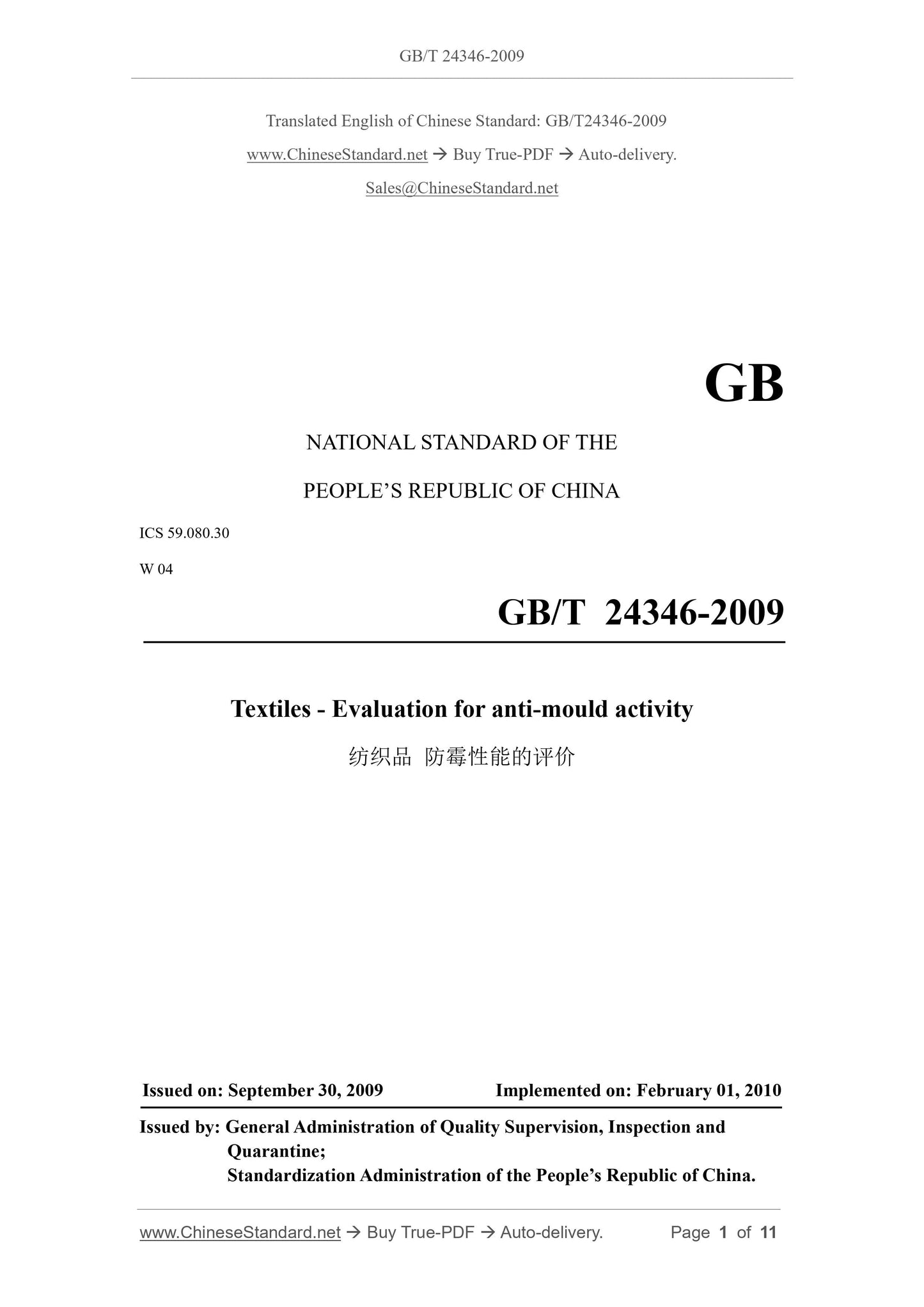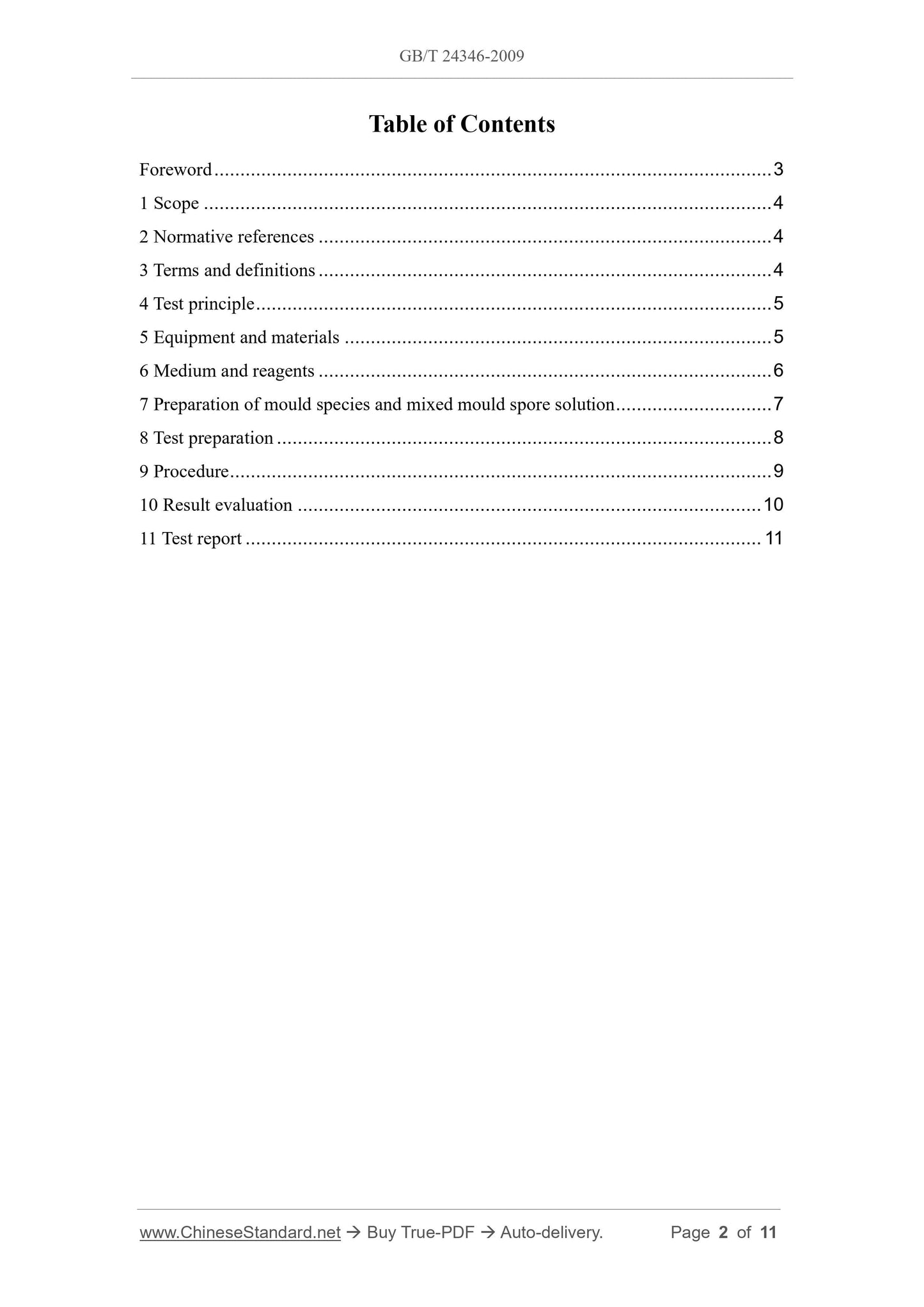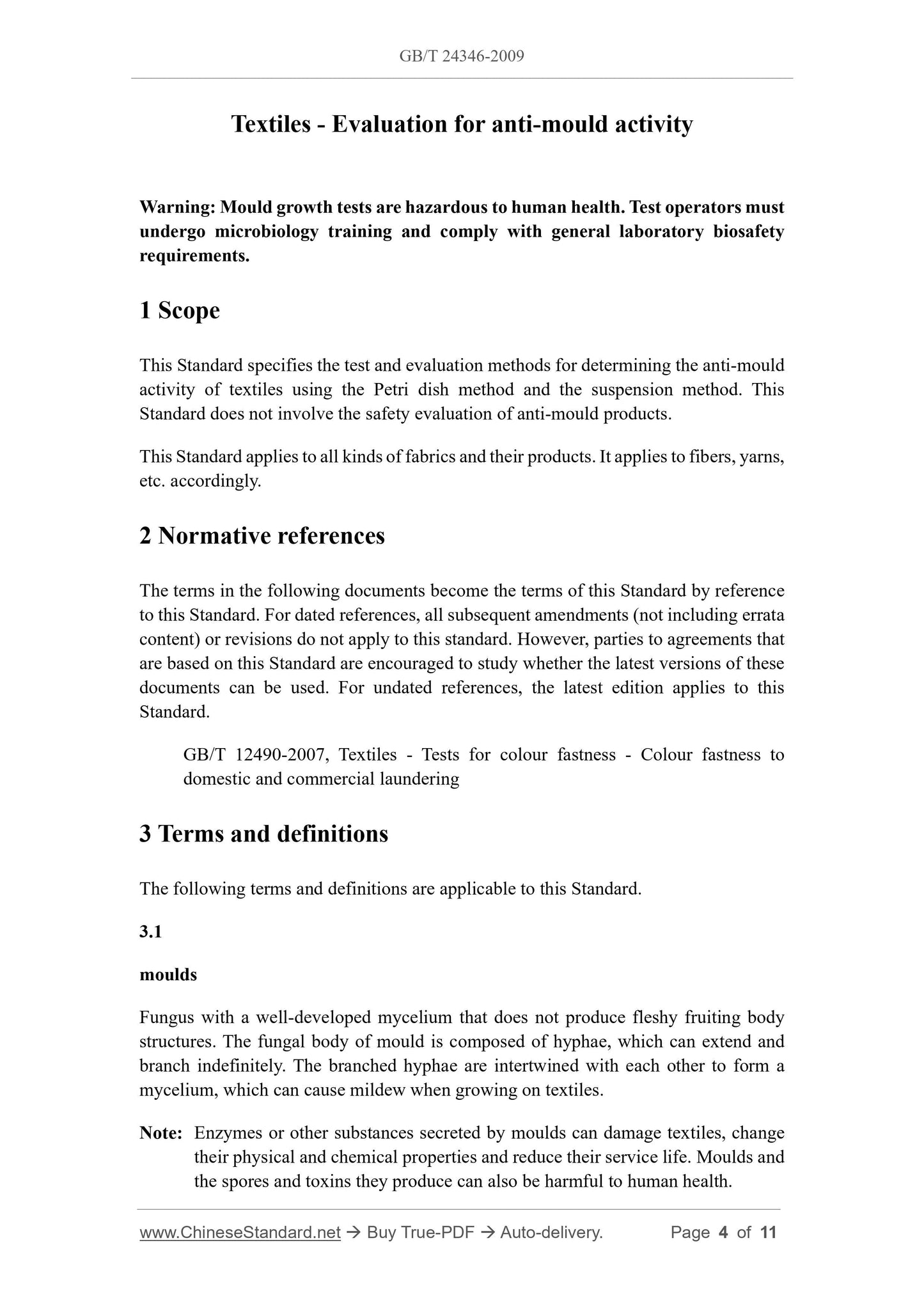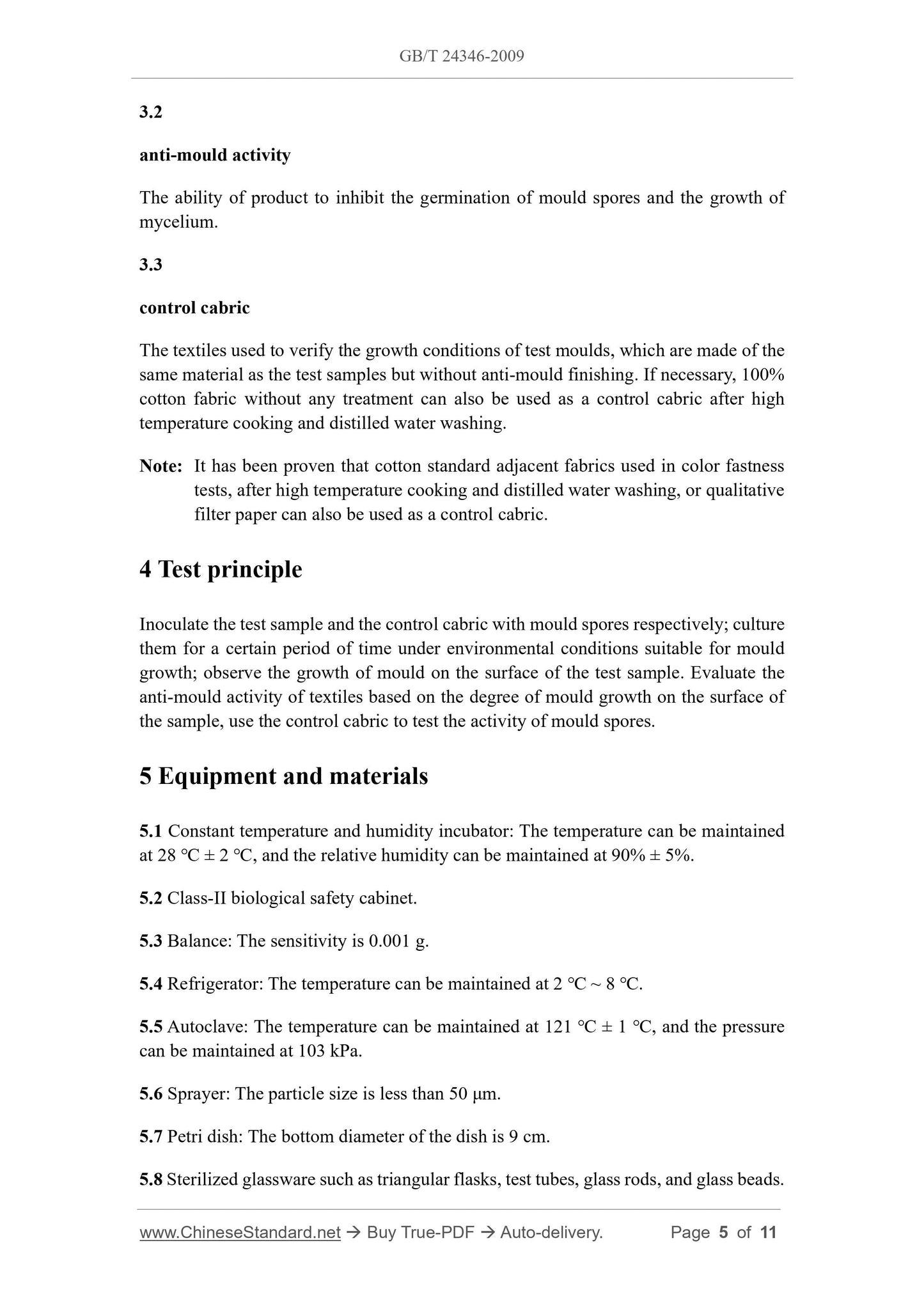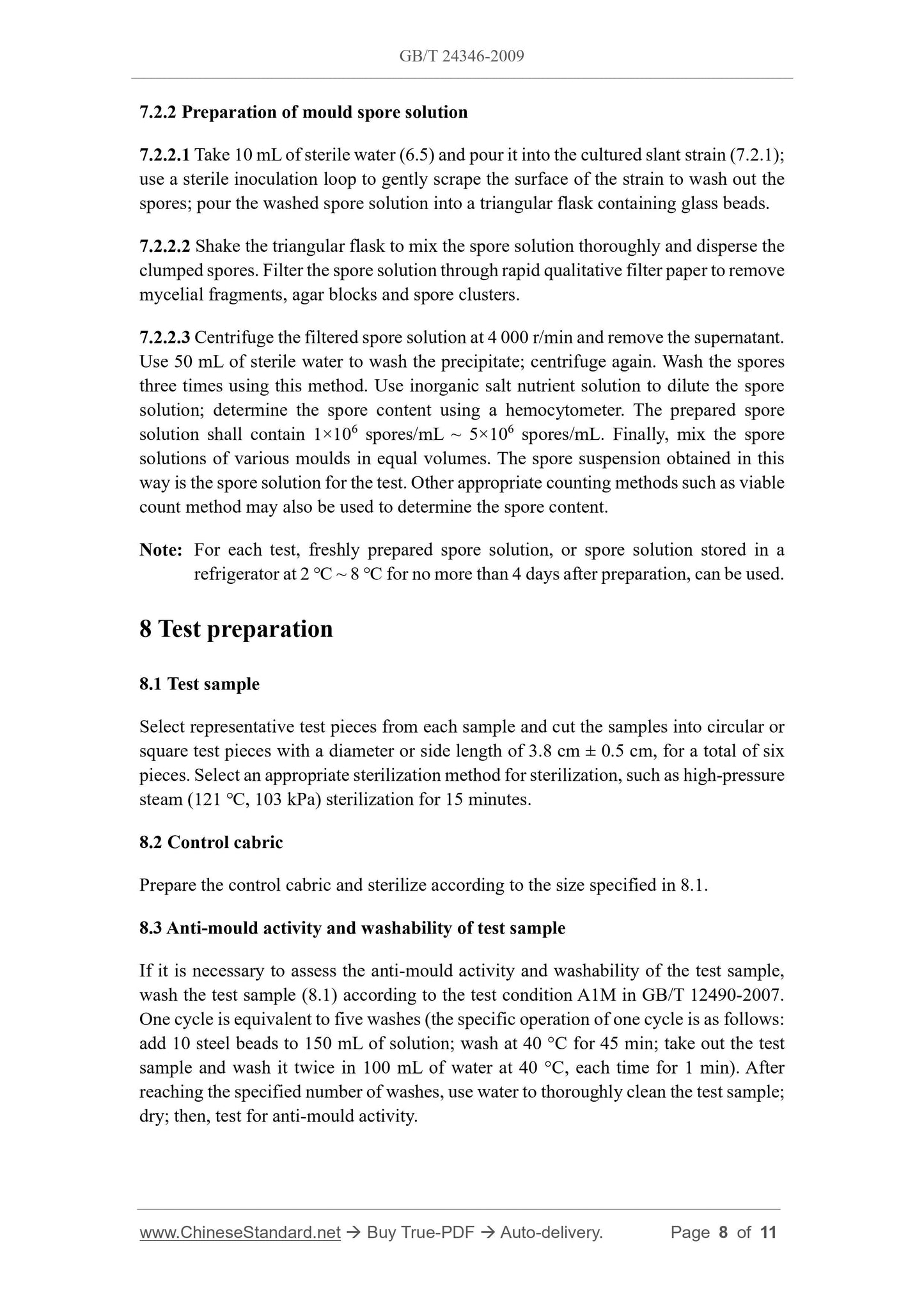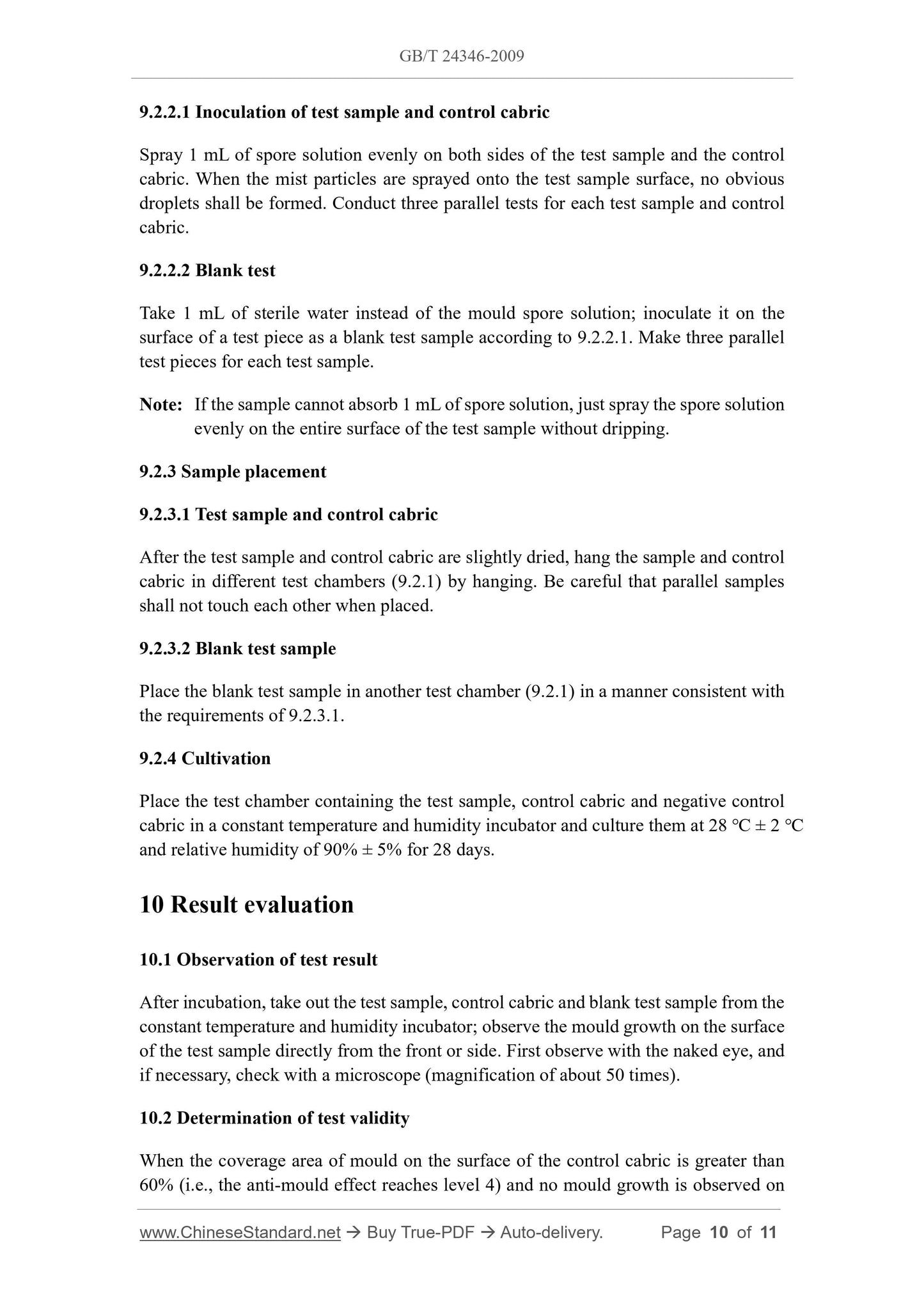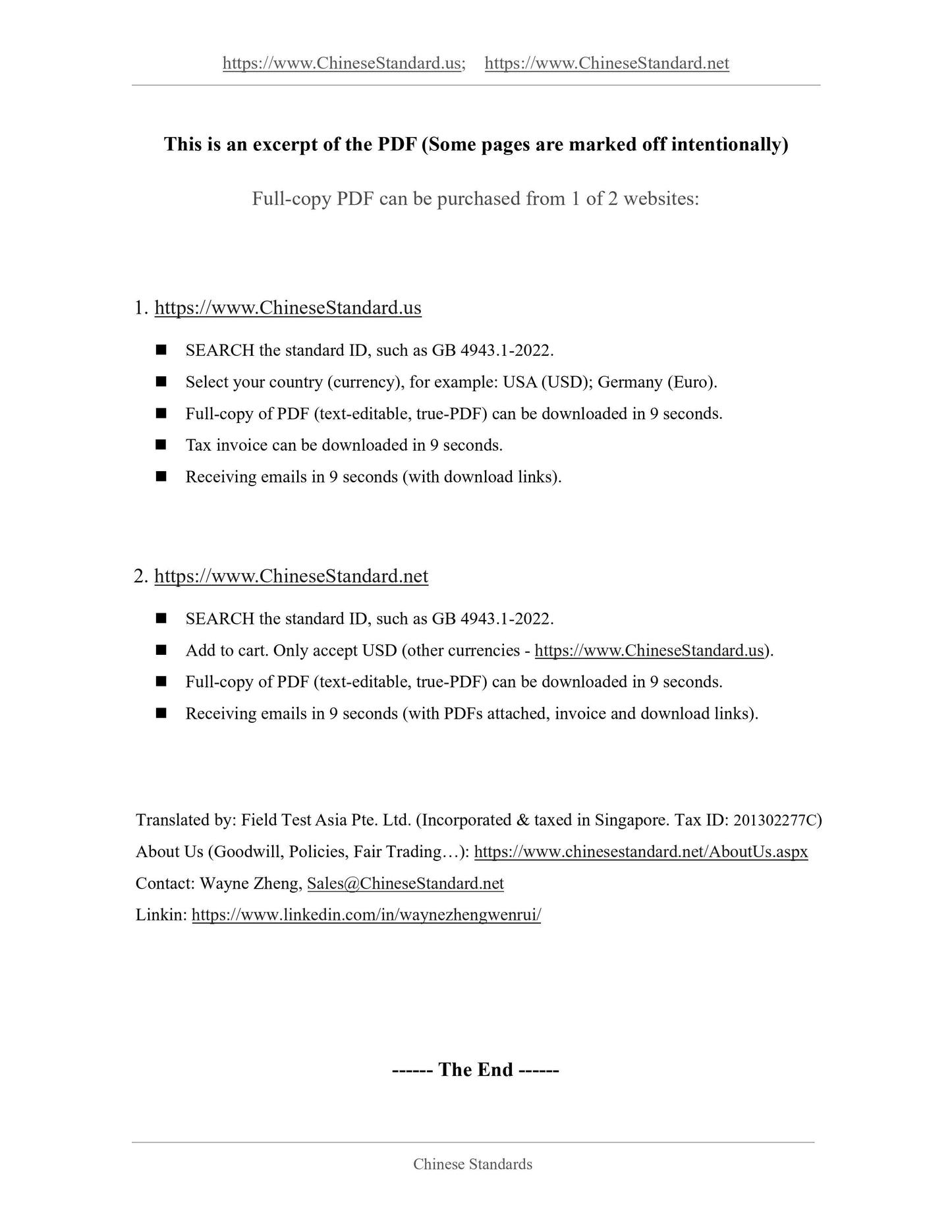1
/
of
7
www.ChineseStandard.us -- Field Test Asia Pte. Ltd.
GB/T 24346-2009 English PDF (GB/T24346-2009)
GB/T 24346-2009 English PDF (GB/T24346-2009)
Regular price
$135.00
Regular price
Sale price
$135.00
Unit price
/
per
Shipping calculated at checkout.
Couldn't load pickup availability
GB/T 24346-2009: Textiles -- Evaluation for anti-mould activity
Delivery: 9 seconds. Download (and Email) true-PDF + Invoice.Get Quotation: Click GB/T 24346-2009 (Self-service in 1-minute)
Newer / historical versions: GB/T 24346-2009
Preview True-PDF
Scope
This Standard specifies the test and evaluation methods for determining the anti-mouldactivity of textiles using the Petri dish method and the suspension method. This
Standard does not involve the safety evaluation of anti-mould products.
This Standard applies to all kinds of fabrics and their products. It applies to fibers, yarns,
etc. accordingly.
Basic Data
| Standard ID | GB/T 24346-2009 (GB/T24346-2009) |
| Description (Translated English) | Textiles -- Evaluation for anti-mould activity |
| Sector / Industry | National Standard (Recommended) |
| Classification of Chinese Standard | W04 |
| Classification of International Standard | 59.080.30 |
| Word Count Estimation | 8,818 |
| Date of Issue | 2009-09-30 |
| Date of Implementation | 2010-02-01 |
| Regulation (derived from) | National Standard Approval Announcement 2009 No.10 (Total No.150) |
| Issuing agency(ies) | General Administration of Quality Supervision, Inspection and Quarantine of the People's Republic of China, Standardization Administration of the People's Republic of China |
| Summary | This standard specifies test methods and evaluation of antifungal properties of textiles assay method using petri dishes and suspension. This standard does not involve mildew product safety evaluation. This standard applies to all types of fabrics and their products. Fiber, yarn, etc. can be implemented by reference. |
Share
